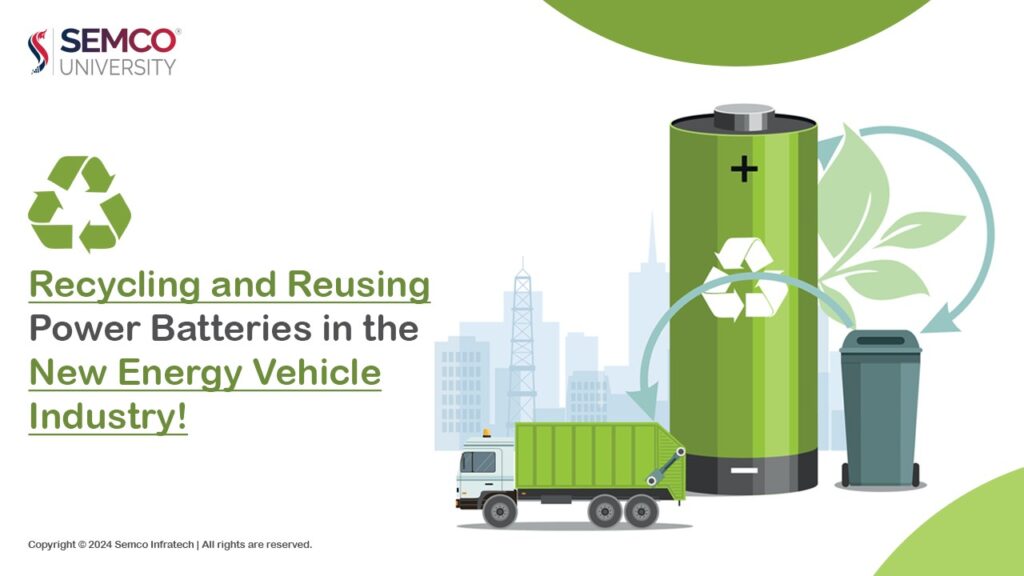The national standards for the scrapping of power batteries state that due to the new energy vehicle industry’s rapid development, there will be a rise in the quantity of used power batteries in the coming years, making the issue of recycling and reuse of power batteries more and more pressing. There are numerous varieties of used power batteries, and recycling and treating them present numerous difficulties. The following are currently the main issues with waste power battery recycling and utilization: First off, there are numerous varieties of waste power batteries, and each one has particular needs regarding how production lines should be set up for automatic disassembly. Second, the power battery pack experiences frequent charges and discharges, resulting in low quality and inconsistent performance. This calls for the use of test equipment to assess the battery’s safety and cycle life. Third, there is a small recovery profit margin and a high cost associated with recycling used power batteries. Despite the aforementioned issues with the recycling and use of used batteries, we can still handle and recycle these batteries in an efficient manner and achieve resource reuse by employing a number of scientific techniques.
- Ladder utilization: Reusing power batteries that have been lightly scrapped is known as ladder utilization. We can reassemble these batteries and use them in other industries, like energy storage devices and low-speed electric cars, by using cycle testing and life prediction. To record the battery’s service life information, we must create a standardized system for power batteries that includes structural design, process flow, coding, and integrated installation.
- Raw material recycling: We can recycle raw materials to make heavy scrap power batteries usable again, even if they are not tested for failure and cannot be used in cascades. This covers the recovery of electrolytes, positive materials, and negative materials.
Physical method: Treat the waste power battery by means of the physical reaction process. The crushing flotation method is one of them; it involves crushing, separating, and heat treating the organic binder before separating the flotation based on the electrode material’s hydrophilic qualities to recover the powdered metal compound. The mechanical grinding law turns lithium compounds in electrode materials into salts by means of mechanical grinding and thermal energy.
Chemical method: Chemical reactions are used to treat the power battery. Through high-temperature combustion, pyrometallurgy extracts the organic binders from the electrode material, reduces the metal compounds to undergo a redox reaction, and then recovers the metals and their low-boiling-point compounds. Chemical solvents are used in hydrometallurgy to break down electrode materials and separate and purify the metal elements present in the solution.
Biological method: To achieve selective leaching of metal elements, utilize the metabolic processes of microbial fungi. Thiobacterium sulfur dioxide, ferrous oxide microspilli, and thiobacterium ferrous oxide are among the microorganisms used in leaching.
Currently, the primary technique for handling heavy waste battery electrode materials is hydrometallurgy. Pretreatment, acid leaching, separation, and purification are some of the treatment phases. The resistance method is used to carry out deep discharge during the pretreatment phase. Acid leaching is a technique used to extract the positive electrode materials from power batteries by using both organic and inorganic acids. Solvent extraction and chemical precipitation are two techniques used in separation and purification.
We also need to make further advancements in the technology of power battery disassembly and electrode material extraction in order to achieve the automation of recycling to realize the economy and safety of recycling used power batteries.
To put it briefly, reusing and recycling old power batteries is crucial for the growth of the new energy vehicle sector. We can efficiently handle and recycle these used batteries and achieve resource reuse through cascade utilization and raw material recycling. We are certain that we can find a solution to this issue and help the new energy vehicle sector grow sustainably thanks to the rapid advancement of technology.

